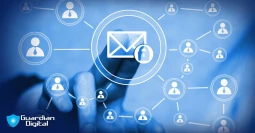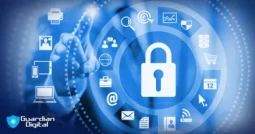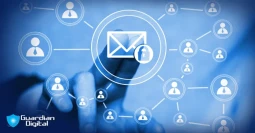Spoof-Proof Your Inbox: A Go-To Guide to Email Defense

Email spoofing preys on your trust, fooling you into handing over sensitive information. And without the right defenses, one wrong click could open the door to identity theft, draining bank accounts, or a full-scale data breach.
With a few simple strategies, you can stay ahead of these scams and secure your inbox. Let’s dive into the essential tools and tips that make email protection easy and effective so that you can prevent email spoofing.
What Is Email Spoofing, and Why Should You Care?
Email spoofing generally involves creating forged sender email addresses that appear as if the communication comes from a trusted source, such as your bank, a colleague, or even your family. Cybercriminals have used several such spoofing schemes for various purposes, ranging from phishing scams and malware distribution to identity theft.
Falling prey to an email spoof may result in severe consequences, from stolen information regarding one's identity to unauthorized account access. By targeting protection from email spoofing, these are kept at bay.
How Can You Recognize a Spoofed Email?
The ability to identify email scams is an important first step to email spoofing protection. What to look out for:
- Suspicious sender addresses usually involve attackers changing one character—like "@payal1.com" instead of "@paypal.com."
- Urgent or fear-based language, an email that appears much too urgent or one that makes an individual feel compelled to do something immediately, could be spoofed.
- Unfamiliar attachments or links are a no-go. Hover over links—in other words, without clicking—to see if they're legitimate.
BEC Fraud Example
Knowing these can help you dodge spoofing attempts and keep your inbox safe.
What Tools Can Help Keep Me Safe from Spoofing?
Keeping emails safe from spoofing is much easier with the right tools. Anti-spam filters are a great starting point. These filters analyze incoming emails for suspicious patterns and block messages that appear risky, often using real-time threat intelligence to spot new threats as they emerge.
Beyond filters, email authentication protocols play a critical role in verifying sender identities. SPF checks that emails come from an authorized IP address associated with the domain. DKIM adds a digital signature to emails, which lets recipients verify that a message hasn’t been altered. Finally, DMARC combines SPF and DKIM to create a more comprehensive email authentication system, allowing domain owners to set rules for handling unauthorized emails.
Content filtering tools add yet another layer of defense by scanning email content for dangerous links, malware, and suspicious attachments. These tools create strong email spoofing protection when used together, significantly reducing the risk of threats reaching your inbox.
What Best Practices Can Help Prevent Email Spoofing?
In addition to using technical tools, following a few simple practices can improve your email security. Start with Multi-Factor Authentication (MFA), which adds an extra layer of security by requiring two verification forms for account access. This makes it harder for attackers to gain access, even if they manage to get hold of your password.
Another essential step is keeping your email software updated. Outdated software can open vulnerabilities for attackers to exploit, so regularly updating your systems and applying patches is key. And if you’re managing a team, training employees on phishing tactics and spoofing tricks is invaluable. Educated users are much less likely to fall for email-based scams, so invest in awareness training to strengthen your email spoofing protection.
How Can You Educate Your Team on Email Spoofing?
Email security is a shared responsibility, especially in a business setting. Training your team on recognizing and reporting spoofing attempts is a great defense against these threats. Teach employees to look for red flags like strange sender addresses, unfamiliar links, or urgent language.
Encourage team members to verify any unusual email requests by contacting the sender through another channel, like a phone call. And make sure they understand the basics of SPF, DKIM, and DMARC. Understanding can make users more cautious and proactive in spotting suspicious emails.
Take Charge of Your Email Security Today
Email spoofing is a serious threat, but with the right tools, knowledge, and best practices, it can be managed. By implementing strong authentication protocols, staying vigilant for red flags, and using advanced email filtering tools, you’re actively safeguarding your inbox and protecting your sensitive information.
Remember, email security isn’t just a one-time setup—it’s an ongoing effort. Stay proactive, keep up with the latest cybersecurity updates, and educate those around you. A few simple actions today can make all the difference in preventing email spoofing tomorrow. Take control of your email security and keep your communications safe.
Other FAQs
- What Is Guardian Digital EnGarde Cloud Email Security?
- FAQs: What Are Some Examples of Malicious Code?
- How to Properly Scan Your Windows Computer for Malware & Remove Malware from Your PC
- FAQs: What Are Denial of Service (DoS) Attacks?
- FAQs: Why Outsource Businesses Email Security?
- What Is Domain Spoofing?
- What Are Insider Threats & How Can You Reduce Your Risk?
- The Silent Assassins: How Impersonation Attacks Target CEOs via Email
- How Can I Choose the Right Email Security Service for My Organization?
- What Are the Benefits of Managed Security Services Providers (MSSPs)?





